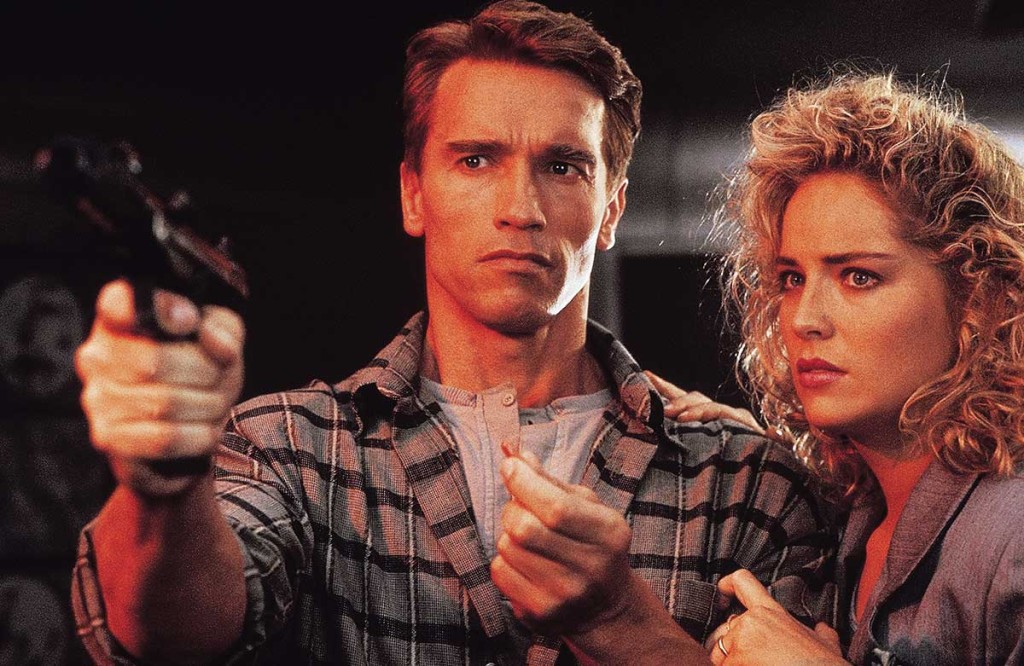The works of sci-fi author Phillip K. Dick have inspired many film adaptations over the years. Sammy Ward provides a run-down of some of the best.
Some of the most successful and, arguably, the best sci-fi films have been pulled from the imagination of Philip K. Dick (1928-1952), a famous science-fiction novelist who inspired a long list of films that have taken his vision and characters and brought them to life with vivid and extravagant worlds.
Dick’s work also fell under the genres of paranoid fiction and philosophical fiction as well as sci-fi. As a reflection to his own cynical views of real life, Dick often created characters who spoke with incisive dialogue. He would focus a lot of energy on the character’s psyche, and the world around them would evolve through their perspective, often filled with folly and mordant humour. Here I am going to take a look at the best films adapted from the extraordinary mind of Philip K. Dick.
Bladerunner (1982)
‘Do Androids Dream of Electric Sheep?’, written by Dick, was published in 1968. In a futuristic world, Dick explores the issues of what it is to be human. The story follows skeptical and retiring bounty hunter Rick Deckard. He must do one last job, putting an end to six escaped, highly-advanced androids.
Dick always questioned what was real, and he delved deep into this philosophical idea of what being human really means, an idea that piqued interest for an adaptation straight away. Martin Scorsese felt compelled to direct, which would have been an interesting outcome, but it never got optioned and Dick wasn’t impressed with the screenplay written by Robert Jaffe.
Dick didn’t have much faith in Hollywood, but a film was finally optioned in 1977, when Hampton Fancher approached with his screenplay; thereafter Ridley Scott was convinced to direct. Scott came up with the new title Blade Runner, and brought in Harrison Ford as the android hunting expert, Deckard. With Scott’s experience directing sci-fi/horror (Alien) he was sure to bring something visionary and different.
On Blade Runner’s initial release (1982), it was not well received, due to its offbeat pace. However, it has gained credibility for its blend of science fiction and film noir, and now it is a cult classic, greatly appreciated by many fans of the genre. There are seven versions of the film due to marketing for different audiences, including versions with and without narration for Deckard throughout the film.
It wasn’t until 2007 that Scott had the total freedom to create, what is now called, the final cut for the 25th anniversary. This year the film celebrates its 30th Anniversary, and is being re-released in cinemas and on blu-ray, proving its popularity to this day.
Total Recall (1990)
Published in 1966, Dick’s short story, ‘We Can Remember It For You Wholesale’ was his second piece of literature to be adapted into film in 1990. Dick was known for elaborate titles, not suitable for the film format. Thus the film was retitled Total Recall.
Although loosely based on Dick’s original story, the film takes the one main premise: “Rekal” a scientific corporation which can make your dreams seem as if they actually happened. In Dick’s original story, the main character, Quail, dreams of being in Mars as a secret agent, but soon discovers his dreams are actually memories when he visits “Rekal”.
In this version Quail never goes back to mars. Unlike in director Paul Verhoeven’s adaptation, our protagonist, now renamed Quaid, takes a crazy journey to a futuristic city on planet Mars, inhabited by mutants and alien life forms. The film adapts Dick’s story to a bigger scale, bringing the hero’s memories to life that the short story only hints at.
It won an Academy Award for its visual affects and BMI Film Music Award for its original score. You might as well forget about the 2012 remake. With action star Arnold Schwarzenegger playing the protagonist, it was and remains a fun, satirical and thrilling sci-fi/action film.
Minority Report (2002)
Mystery thriller Minority Report (2002), directed by Steven Spielberg, is another Dick adaptation, incredibly well-received for its script and neo-noir, visual aesthetics. This is, again, loosely based on Dick’s original short story of the same title, set in a future where crime can be foretold by three mutants (the precogs).
Minority Report stars Tom Cruise in one of his better roles as Captain John Anderton, an officer working in PreCrime, a specialized police department. Dick themed his story on the philosophical idea of free will-versus-determinism under an Authoritarian government.
PreCrime uses the precogs to predict illegal activity, allowing the department to make an arrest before any crime is committed. Anderton, however, becomes one of the suspects and instead of being the hunter he soon becomes the hunted in an attempt to change his fate. It’s not as much of a cult film as the latter two now are, but it remains another important film and story in the sci-fi genre.
These three films are not only some of the best ideas to come from Dick’s stories, but are also considered important in the Science Fiction genre. Each story is meshed with its own sub-genres and styles. Dick’s ideologies are well presented in these films and they definitely provide the sense of escapism that his literature did.
Here are some other important films to note that have come from Dick’s stories:
A Scanner Darkly (2007)
A Scanner Darkly (2007), directed by Richard Linklater, is based on the award winning novel of the same name about identity and deception set in a dystopian world with highly advanced surveillance technology where drug abuse is an epidemic.
Dick used his own experiences with drugs to write the novel, exploring both recreational and abusive drug use. It was probably one of the most personal works from Dick and one of his best known.
Wanting to do the story justice, it was important for Linklater to gain the rights from Dick’s representatives. It received a Hugo Award for Best Dramatic Presentation. Using innovative techniques, he filmed digitally and then layered the image with animation, using rotascoping to give the film its unique look and convincingly convey the idea of the camouflage suit, worn by Keanu reeves in the story.
The Man in the High Castle (2015)
The Man in The High Castle is the most recent adaptation of Dick’s work, this time in the form of a TV series. In a ‘world that might have been’, set after an alternate ending of World War Two, the novel and series explore the idea of what life would be like if the Axis powers had won and ruled over the former U.S. It won a Science Fiction Achievement Award (Hugo Award) in 1962 for the near perfect merging of two genres, alternate history and science fiction. It’s a wonder this radical idea hasn’t already been adapted successfully.
It was 1951 when Dick’s first fictional piece was published. Socially, it was a time of escapism. People opened up to his whimsical fantasies to get away from the horrors of everyday life and he was known as a genius in the science fiction genre.
However, his work remained under-appreciated in the primary literary world. He spent a lot of time proving he could break into, and deserved to be in, mainstream American literature. Filled with paranoia and government repression, it was Dick’s philosophical and satirical thoughtfulness of his characters, that made the worlds he created so fantastical. He remains to this day an influence in science fiction in all its forms.








